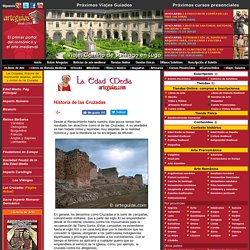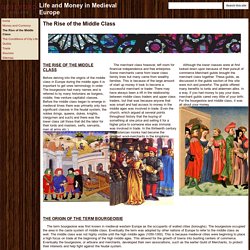

Untitled. Medieval cities. Marco Polo - Exploration. Two years later, Niccolò and Maffeo sailed to Acre in present-day Israel, this time with Marco at their side.

At the request of Kublai Khan, they secured some holy oil from the Church of the Holy Sepulchre in Jerusalem and then backtracked to Acre to pick up gifts, papal documents and two friars from newly elected Pope Gregory X. The friars quickly abandoned the expedition, but the Polos continued on, possibly by camel, to the Persian port city of Hormuz. Failing to find any boats to their liking, they instead took take a series of overland traders’ routes that, in the 19th century, would become known as the Silk Road. Over the next three years they slowly trekked through deserts, high mountain passes and other rough terrain, meeting people of various religions and cultures along the way.
Finally, around 1275, they arrived at Kublai Khan’s opulent summer palace at Shangdu, or Xanadu, located about 200 miles northwest of his winter quarters in modern Beijing. Las Cruzadas. Desde el Renacimiento hasta nuestro días pocos temas han resultado tan atractivos como el de las Cruzadas.

A su alrededor se han forjado mitos y leyendas muy alejadas de la realidad histórica y que la literatura se ha encargado de difundir. En general, se denomina como Cruzadas a la serie de campañas, comúnmente militares, que a partir del siglo XI se emprendieron desde el Occidente cristiano contra los musulmanes para la recuperación de Tierra Santa. Estas campañas se extendieron hasta el siglo XIII y se caracterizaban por la bendición que les concedió la Iglesia, otorgando a los particulares indulgencias espirituales y privilegios temporales a los combatientes.
Con el tiempo el término se aplicaría a cualquier guerra que se emprendiera al servicio de la Iglesia, como, por ejemplo, la cruzada contra los albigenses. El origen de las Cruzadas Espiritualmente dos corrientes coinciden en las Cruzadas. Las ocho Cruzadas La VIII cruzada (1271) también fue iniciativa de Luis IX. Consecuencias. The Black Death - Worst plague in history.
Fourteenth-Century Peasant Revolts Across Europe. Ancient China for Kids: The Silk Road. History >> Ancient China The Silk Road was a trade route that went from China to Eastern Europe.

It went along the northern borders of China, India, and Persia and ended up in Eastern Europe near today's Turkey and the Mediterranean Sea. Map of the Silk Road - Route in red (later ocean routes in blue)Source: NASA Why was the Silk Road important? The Silk Road was important because it helped to generate trade and commerce between a number of different kingdoms and empires. Why is it called the Silk Road? It was called the Silk Road because one of the major products traded was silk cloth from China.
What goods did the Chinese trade? Besides silk, the Chinese also exported (sold) teas, salt, sugar, porcelain, and spices. How did they travel? Merchants and tradesmen traveled in large caravans. History Although there was some trade between China and the rest of the world for some time, the silk trade was significantly expanded and promoted by the Han Dynasty which ruled from 206 BC to 220 AD. Medieval Guilds. Life and Money in Medieval Europe. This website will give you a basic understanding of what life was like for a merchant in medieval times.

When you think of the medieval ages you may wonder if there was any civility at all. The answer is yes, and you may even be surprised to see how much of our modern market and financial systems came out of medieval inventions and concepts. Currency, for example, was an invention of the middle ages. Credit was a key source of trade and value. Guilds, similar to modern corporations, owned trade ports and held monopolies over many craft and trade goods. The Rise of the Middle Class - Life and Money in Medieval Europe. Before delving into the origins of the middle class in Europe during the middle ages it is important to get ones terminology in order.

The bourgeoisie had many names and is referred to by many historians as burgess, middle, free venture capitalist classes. Before the middle class began to emerge in medieval times there was primarily only two significant classes in the feudal system, the nobles (kings, queens, dukes, knights, clergymen and such) and there was the lower class (all those that did the labor for their lords and masters, serfs, servants, men at arms etc.). The merchant class however, left room for financial independence and free enterprise. Some merchants came from lower class family lines but many came from wealthy families. This is because of the large amount of start up money it took to become a successful merchant or trader.
Although the lower classes were at first looked down upon because of their pursuit of commerce Merchant guilds brought the merchant class together. European Trade Networks. The Life Story of Marco Polo in Under 3 Minutes. Marco Polo Journeys [IgeoNews] Marco Polo's Travels & Routes. The Middle Ages for Kids and Teachers - Middle Ages for Kids. Europa en los siglos XII y XIII. Medieval city life - Medieval Madness.